
Diatonic Harmonica Studies
A Beginner's Notes, Research, Resources and Comments
By Michael P. Garofalo
Books
Blog Posts
Blues
Chords
Chromatic Harmonicas
Discoveries
Goals
Harmonicas
Improvisation
Internet
Key of C Major
Links
Listening
Low Key Harmonicas
Music: Albums MP3 Videos
Musicians, Harmonica Players
Objectives
Other Harmonicas
Percussion
Positions
Progress Reports
Psychology
Quotations
Teachers
Techniques, Tips

My
Musical Objectives, Goals, Mission, Background
Diatonic Harmonica
"While it's natural and oh so tempting to announce big goals, it's smarter to keep them to yourself. Telling others about your big goals makes them less likely to happen, because it creates an unconscious payoff - tricking our brains into thinking we've already accomplished the goal. Keeping our big goals to ourselves is one of the smartest goals we can set."
- Daniel Coyle, The Little Book of Talent
I do believe that writing, rewriting, revising and printing your objectives and goals, and studying them, and doing regular reviews on your progress, are all very important for both short and intermediate term improvements and progress, better focused practice, and steady learning of new challenging tasks. Set you immediate objectives for two months, intermediate goals for six month, and long term goals, aims, and mission.
You need not share this written information with anyone else or talk to others about your plan.
Keep your specifics to yourself if that is what you desire.
However, you must have a detailed written plan you have created for yourself.
A real SMART Plan for a Beginner! And, what are your Big Musical Visions?
A plan for daily work, practice, learning, and enjoyment while playing.
Here are my Intermediate Objectives for March to September 2025:
Enjoy playing my diatonic harmonicas every day.
Listen to music more often.
Work more on rhythm, pacing, tempo, pauses.
Play more with eyes closed. Listen carefully.
Use the Big Harmonica Songbook by Olaf Bohme.
Experiment, Learn, Absorb, Practice, Improve!
If you want to look at a very detailed plan for accomplishing your musical objectives,
goals, aims, and mission, here is one for you to consider below.
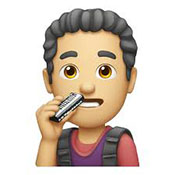

Chords on a 10 Hole Diatonic Harmonicas
By Michael P. Garofalo
June 2024
Common Harmonica Keys: C Major and C Major Low, G, A, D, F
I gathered the information provided below from an outstanding series of highly detailed and informative books by James Major titled "The Complete 10 Hole Diatonic Harmonica Series." Each book in the series is about one harmonica key. Detailed information, informative charts, well organized, chords, arpeggios, scales, positions, excellent layout, and a valuable booklet of around 50 pages. For example,C Harmonica Book. By James Major. Mel Bay Publishing, 2005, 48 pages. $15.00. Paperbound oversize.
Ten Hole Diatonic harmonicas use the Richter Tuning Scale for organizing the notes on a 10 hole harmonica. You will notice that once you master chord blow/draw holes, then you can play the same harmonica musical composition in any diatonic harmonica Key using the same holes for chords.
"Guitars and keyboards are the instruments that we most commonly hear playing chords in popular music. The harmonica is unique in that it is one of the few wind instruments that can also play chords."
I mostly play a Hohner Thunderbird 10 hole diatonic harmonica in the Key of C Major Low, or an
A. C. Seydel 1847 Low Tone and Bold Body 10 hole diatonic harmonica in the Key of C Major Low. I enjoy the sound of the chords from C Major Low.
Various Harmonicas in the Key of C Major
I must memorize as well as musically sense/feel/listen to the holes/notes placement more precisely and beautifully using a diatonic harmonica in the Key of C Major Low.
From Low (G) to High (F) Tone Keys on a 10 Hole Diatonic Harmonica. The note C is in the middle of the tone sequence.
G, G#, G Low, A, Ab, A Low, B, Bb, Bb Low, C, C Low, D, Db, D Low, E, Eb, F, F#, F Low, F LowL
Chords and Notes on a C Major 10 Key Diatonic Harmonica
I C Major CEG (Blow Holes 123 or 456 or 789 or any 3 adjacent holes)
IV F Dyad FA (Draw 56 and Draw 9 10)
V G Major GBD (Draw Holes 234 or Draw Holes 1234
G7 GBDF (Draw Holes 2-5)
Gm DG (Draw 12)
Dm DFA (Draw 456 and Draw 89 10)
Bb BDF (Draw 3456 and 789)
Cross Harp 2nd, Play on F Key diatonic harmonica.
Key Signature: No Sharps and No Flats: C Major or A minor.
C Major Harmonica: Chords, Holes, Notes.
Some blues approaches list the I Chord as G or G7, the IV Chord as C, and the V Chord as F.
I own and switch between playing 10 hole diatonic harmonicas in the Key of C Major and C Major Low. Here is what I have, older and newer in age, in my bag of harmonicas:
1) Key of C Major LOW - A.C. Seydel 1847 Bold Body Low Tone C Diatonic Major Low C,Hohner Marine Band Thunderbird Diatonic Low C, Hohner Rocket Diatonic Low C, Suzuki Manji Diatonic Low C, or Lee Oskar Tombo Diatonic Low C.
2) Key of C Major - Hohner Crossover C, Hohner Special C, Lee Oskar Tombo C, Suzuki Pro C, Seydel Blues C, Easttop C, Fender C.
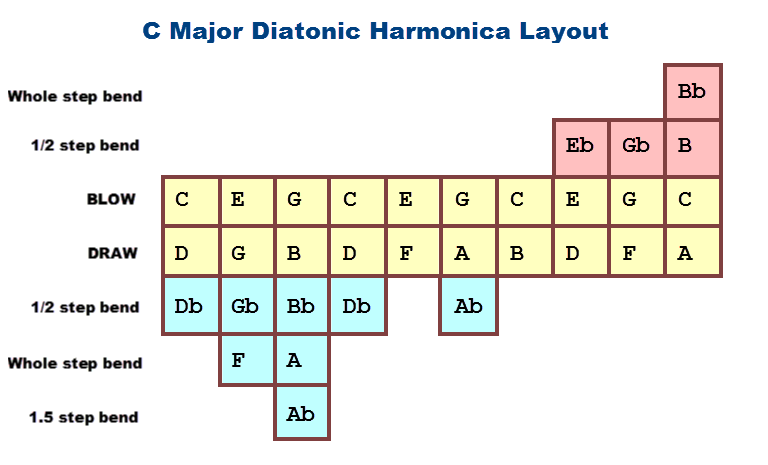
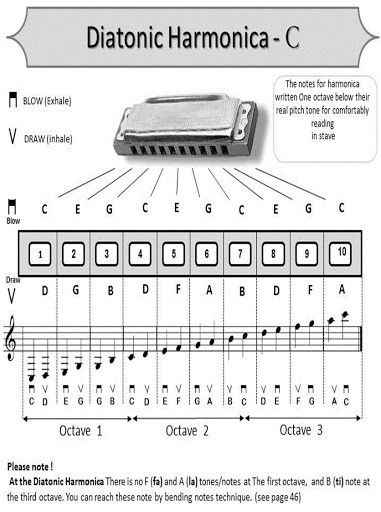
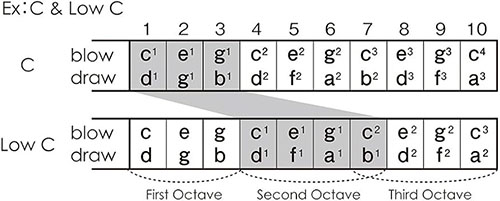
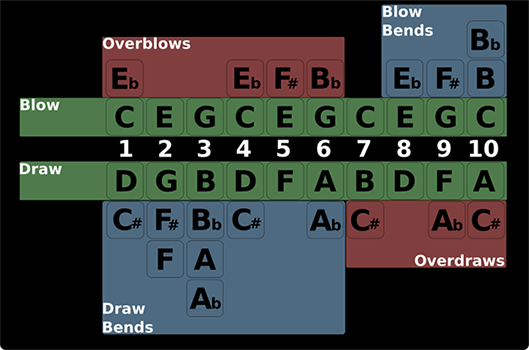
1st Position
C Major Scale
C [ 1 ] D [ 2 ] E [ 3 ] F [ 4 ] G [ 5 ] A [ 6 ] B [ 7 ] C [ 1 ]
1 -1 2 -2’’ -2 -3’’ -3 4
4 -4 5 -5 6 -6 -7 7
7 -8 8 -9 9 -10 10’ 10
Practice Guide
Low Octave Only:
1 -1 2 -2’’ -2 -3’’ -3 4 4 -3 -3’’ -2 -2’’ 2 -1 1
Middle Octave Only:
4 -4 5 -5 6 -6 -7 7 7 -7 -6 6 -5 5 -4 4
High Octave Only:
7 -8 8 -9 9 -10 10 -10 9 -9 8 -8 7
Full Scale:
1 -1 2 -2’’ -2 -3’’ -3 4 -4 5 -5 6 -6 -7 7 -8 8 -9 9 -10 10 10 -10
9 -9 8 -8 7 -7 -6 6 -5 5 -4 4 -3 -3’’ -2 -2’’ 2 -1 1
- Jonah Fox, The Scales Cheat Sheet, PDF
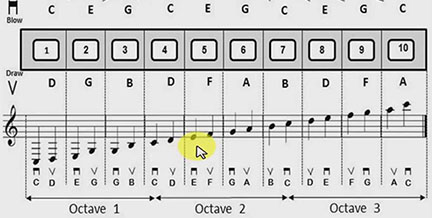


C Major Diatonic Harmonica: Chords, Holes, Notes (PDF)
Various Harmonicas in the Key of C Major
Return to the Top Index of This Webpage

Key of C Major in a 10 Hole Diatonic Harmonica
Chords on G Key Diatonic Harmonica
I G Major GBD (Blow Holes 456 or 789 or 123 or any 3 adjacent holes)
IV C CE (Draw 56 and Draw 9 10)
V D Major DF#A (Draw Holes 234 or Draw Holes 1234
Gm Minor DG (Blow 34 and 67 and 9 10)
D7 DFmAC (Draw Holes 2-5)
Dm AD (Draw 12)
Am ACE (Draw 456 and 89 10)
F# FAC (Draw 345 and 789)
Cross Harp 2nd, Play on C Key diatonic harmonica.
G Key is used in Blues for Draw Bending on A D F# A C E.
Key Signature: One Sharp on Top D; G major or E minor.
G Major Harmonica: Chords, Holes, Notes (PDF).
I play: Hohner Crossover Key of G, Hohner Thunderbird Key Low G.
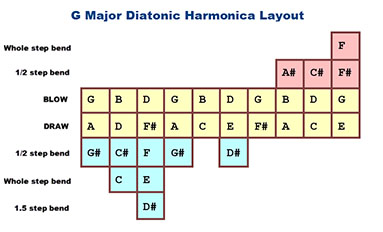

G Major Harmonica: Chords, Holes, Notes (PDF).
Return to the Top Index of This Webpage
Chords on A Major Key Diatonic Harmonica
I A Major ACE (Blow Holes 123 or 456 or 789 or any 2 or 3 adjacent holes)
IV D Dyad DF (Draw 56 and Draw 9 10)
V E Major EGBD (Draw Holes 234 or Draw Holes 1234)
Gm Minor GBD (Draw 345 and 789)
E7 EGBD (Draw Holes 2-5)
Em BE (Draw 12)
Bm BDF (Draw 456 and 89 10)
Cross Harp, 2nd, play on D Key diatonic harmonica.
Key Signature: Three Sharps: C F G; A Major or F#minor.
I play: Lee Oskar Tombo Key of A
.
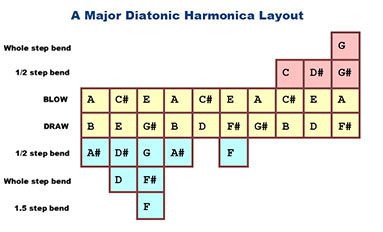
Chords on D Key Diatonic Harmonica
I D Major DFA (Blow Holes 456 or 789 or 123 or any 3 adjacent holes)
IV G Dyad GB (Draw 56 and Draw 9 10)
V A Major ACE (Draw Holes 234 or Draw Holes 1234)
A7 AC#EG (Draw 2345)
Am EA (Draw 12)
Em EGB (Draw 456 and 89 10)
D Blow AD (Blow 34 and 67 and 9 10)
C Triad C#EG (Draw 345 an 789)
Cross Harp 2nd, Play on G Key diatonic harmonica.
Key Signature: Sharp on C, Sharp on F; D Major or B minor.
I play: Lee Oskar Tombo D Key and Low D Key.
.jpg)
Chords on F Major Key Diatonic Harmonica
I F Major FAC (Blow Holes 123 or 456 or 789 or any 2 or 3 adjacent holes.)
IV Bb Dyad BbD (Draw 56 and Draw 9 10)
V C Major CEG (Draw Holes 234 or Draw Holes 1234)
Edim EGBb (Draw 345 and 789)
C7 CEGBb (Draw Holes 2-5)
Cm GC (Draw 12)
Gm GBbD (Draw 456 and 89 10)
Cross Harp, 2nd, play on Bb Key diatonic harmonica.
Key Signature: One Flat, B; F major or D minor.
I play: Hohner Special 20 Progressive Key of F, Seydel Sohne Blues Key of Low F.

.
For Information about What Harmonica Key to Play for a Song: SonicData.io
Harmonica Tablature for Hundreds of Songs: Harptabs.com
Notes, Scales and Positions on the Diatonic Harmonica
Various Harmonicas in the Key of C Major
Use of Your Hands on a Harmonica
Return to the Top Index of This Webpage

Playing Chords with your Harmonica
Harmonica Single Notes for Beginners
Return to the Top Index of This Webpage
Tuning Charts for Hohner Harmonicas
Various Harmonicas in the Key of C Major

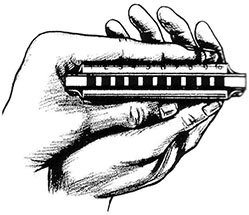
Positions
What are Positions on a Harmonica (1st, 2nd, 3rd). By Tomlin Leckie.
Harmonic Positions Explained: What are 1st, 2nd and 3rd Position. By Liam Ward.
A Beginner's Guide to Positions on the Harmonica. By Jonah Fox.
Notes, Scales and Positions on the Diatonic Harmonica
I play mostly in the 1st Position. That is, I play the same harmonica Key as the sheet music or band is playing in. If the Key of the sheet music is in C Major, then I play a C Major harmonica; if the band is playing in the Key of A, then I play 1st position in the Key of A. Since most harmonica instruction, sheet music, and harmonica tablature are given in the Key of C, you will play a lot of a C Major harmonica in the 1st Position.
Playing in the 2nd Position, means, I think, two methods,
1) Playing a different harmonica Key than the one written for the sheet music. Therefore, sheet music for the Key of C Major would be played on a harmonica in the Key of G Major. You would then play the G harmonic in the 1st Position. It uses music theory and facts to properly harmonize the two different Keys.
2) Using a C Major harmonica in the 2nd Position would mean, starting with G notes, using notes in the G Scale. Used for Blues with Lots of Blows.
I don't really understand this methodology yet, so watch the videos by experts on the subject of playing in different Positions on a diatonic harmonica.
For a quick method of determining what Key to play in 2nd position, use Lucas Clebsch (Luke's) "Five Hand Mnemonic": hold up your right hand, for the little finger say the name of the Key the composition is in (e.g., Key of C), count each subsequent note off on each of the five fingers till you reach the thumb (e.g., CDEFG), therefore, G is the 2nd position key. Also, in a C Major, CDEFGABC, the pinky finger (C, Number 1), middle finger (E, Number 3), and thumb (G, Number 5) are the primary chord, I, CEG, or inversions all on the blow holes. Also, the pinky/little finger (C, Number 1, I chord), index finger (F, Number 4, IV chord) and the thumb (G, Number 5, V chord) are the three basic Chords for the C Major Key: C, F, G.
This works for each Key. For example, the Key of A, ABCDEFGA. Right hand pinky (A), middle (C), and thumb (E) for the tonic of I Chord (ACE). The index/pointer 4th finger (IV, D) and thumb 5 finger (V, E) show the other two basic chords for Key of A.
2nd Position for playing D Major harmonica sheet music, would be a playing a harmonica in the Key of A Major in the 1st Position. DEFGA.
2nd Position for playing G Major harmonic sheet music, would be playing a harmonica in the Key of D Major in the 1st Position. GABCD.
Etc!
Since a Beginner will likely play so much harmonica sheet/tablature music in the Key of C Major, I recommend that your third harmonica purchase be in the Key of G Major, so as to play 2nd Position to the Key of C Major as, of course, 1st Position on a G Key harmonica.
Again, I play 1st Position and/or 2nd Position only on a in C Major and/or a C Major Low diatonic harmonica nearly all the time at my beginning phase of serious harmonica studies, practice, and learning in 2024. I am slowly acquiring diatonic harmonicas in other keys, and play them occasionally, but focus on using the C Major harmonicas.
C Major Diatonic Harmonica: Chords, Holes, Notes
C Major Diatonic Harmonica: Chords, Holes, Notes (PDF)
Various Harmonicas in the Key of C Major
Return to the Top Index of This Webpage

Books, EBooks, PDFs, Documents
Instruction Manuals, Pamphlets
Diatonic Harmonica
A Bibliography in Title Order
VSCL = Valley Spirit Center Library, i.e., my personal home library collection in Vancouver,
Washington, in 2024. Contains many books I read from 1960 to 2024.
FVRL = Fort Vancouver Regional Library, Clark County, Vancouver, Washington.
Acquisitions (purchases or gifts) over decades can create a sizable print collection.
Used bookstores and EBay can help reduce costs. Learning
and education require substantial efforts, daily practice, quality instructors,
good instructional materials, and reasonable costs. What are your goals and objectives in your musical development and progress? And, prepare to sacrifice
financially to achieve them. Of course, all is relative to your financial income.
For a true Harmonica Beginner, I recommend: 1) Purchase a Lee Oskar Tombo 10 hole diatonic harmonica in the Key of C Major; 2) purchase the book "Harmonica for Dummies" by Winslow Yerxa; and, 3) Practice Daily. For under $90.00, you will be kept busy learning for a year. Also, if available, use online video harmonica instructions For a second harmonica, I recommend a beginner purchase a Lee Oskar Tombo Low C harmonica. If you have more cash, go for a Hohner Special 20 or Hohner Crossover in the Key of C Major.
Various Harmonicas in the Key of C Major
Nearly all of the music books listed below for learning to play a harmonica have sheet music and harmonica tablature written for the Key of C.
Some of these books include a CD with audio and/or video lessons; or, refer you to the author's online website where you can download audio and/or video lessons. I indicate those with the symbol: + AV
Ab Harmonica Book. By James Major. Mel Bay Publishing, 2005, 48 pages. VSCL.
Ableton Live 6 Power. By John Von Seggern. VSCL.
Alfred's Essentials of Music Theory: A Complete Self-Study Course for All Musicians. By Andrew Surmani, Karen Farnum Surmani, and Morton Manus. Alfred, 2004, 152 pages. +AV. VSCL.
Atomic Habits: An Easy and Proven Way to Build Good Habits and Break Bad Ones. By James Clear. 2018, 320 pages. VSCL.
Band in a Box. By Peter Upclaire. Kindle EBook, 2022. VSCL.
Band-in-Box 101. By Joanne Cooper. Kindle EBook, 2022. VSCL.
The Big Harmonica Songbook: 200 Popular and Rare Folk Tunes. By Olaf Bohme.
272 pages, 2024. +AV. VSCL.
Blues Harmonica for Dummies. By Winslow Yerxa. Wiley, 2020, 384 pages. Paperback and EBook. VSCL. Excellent Discography of Blues Bests and a history of the blues harmonica.
Blues Play-A-Long And Solo's Collection For Harmonica Beginner Series. A.D.G. Productions. Kindle Edition. By Andrew D. Gordon. VSCL.
Book of Audacity. By Carla Schroder. No Starch, 2011, 359 pages. VSCL.
C Harmonica Book. By James Major. Mel Bay Publishing, 2005, 48 pages. VSCL.
Remember: Practice Often, Learn More, Enjoy Youself, and Be Patient with Yourself.
Chord Harmonica Chart. By Phil Duncan. Mel-Bay, 1996, 4 pages. VSCL.
The Complete Idiot's Guide to Playing the Harmonica. Book and Kindle EBook. +AV. VSCL.
Daily Studies for Diatonic Harmonica. By David Barrett. Mel Bay, 2019, 40 pages. +AV. VSCL.
D Harmonica Book. By James Major. Mel Bay Publishing, 2005, 48 pages. VSCL.
Easiest Harmonica Songbook Ever. Paperback and Kindle EBook. VSCL.
Easy Piano Songs for Kids. 2024, 103 pages. VSCL.
Effortless Mastery: Liberating the Master Musician Within. By Kenny Werner. 2000, 196 pages. FVRL.
Encyclopedia of the Harmonica. By Peter Krampert. 2002, 224 pages.
Essential Ear Training for Today's Musician. by Steve Prosser. 200, 32 pages. VSCL.
Easy Piano Sheet Music for Kids. By Avgusta Udartseva. 2021, 112 pages. +AV. VSCL.
Easy Piano Songs for Kids. 2024, 106 pages. +AV. VSCL.
First 50 Songs You Should Play on Harmonica. Hal Leonard, 81 pages. VSCL.
F Harmonica Book. By James Major. Mel Bay Publishing, 2005, 48 pages. VSCL.
FL Studio Beginner's Guide. Screech House. Kindle EBook.
FL Studio Cookbook. By Chris Rena. 2024, 279 pages. VSCL.
Fl Studio Cookbook. Screech House, 3 in 1, Kindle EBook, 2019. VSCL.
The 14 Unshakable Laws of Learning Music. Dan Spencer. Kindle EBook, 2023. VSCL.
FVRL = Fort Vancouver Regional Library System, Clark County, Washington.
G Harmonica Book. By James Major. Mel Bay Publishing, 2005, 48 pages. VSCL.
Hal Leonard Harmonica Play Along Series. 9 Books.
Harmonica for Dummies. Winslow Yerxa. Wiley, 2015, 390 pages. +AV. VSCL.
Harmonica Lessons from Beginner to Advanced: Original Harmonica Method of Learning to Play and Improvise. By Anton Davydov. 2024, 65 pages. +AV. VSCL.
Harmonica Method. By Ron Manus. Basix, 80 pages. +AV. VSCL
Harmonica Primer Book. By Tom Wolf. Watch and Learn, 2017, 58 pages. +AV. VSCL.
Harmonica Sheet Music Beginner. 2023, 119 pages. +AV. VSCL.
Harmonica Songbook: Shanties and Songs of the Sea. 2017, 84 pages. VSCL.
Harmonica Songbook: Irish Songs and Ballads. 2017, 110 pages. VSCL.
Harmonica Tablature for Hundreds of Songs: Harptabs.com
Harmonicas, Harps, and Heavy Breathers. Kim Field. Cooper Square, 2000, 364 pages. VSCL.
Home Recording. By Jeff Strong. Dummies, 6th Edition, 2021, 462 pages. VSCL.
How to Read Music in 30 Days. Kindle EBook. VSCL.
Life in Tune: Personal Transformation Through Music and Mindful Mastery. By Barry A. Lehman. 2021, 308 pages. FVRL.
The Little Book of Talent, 52 Tips. By Daniel Coyle. Bantam Books, 2012, 117 pages. How to succeed in learning a new skill or talent of any kind. VSCL.
Make Your Harmonica Work Better. By Douglas Tate. 1999, 56 pages.
Mel Bay Harmonica Series.
Method for Chromatic Harmonica. By Max De Aloe. Sher Music, 2021, 240 pages. +AV. VSCL.
The Music Lesson: A Spiritual Search for Growth Through Music. By Victor L. Wooten.
288 pages, 2008.
Music Theory in 30 Days. Kindle EBook. VSCL.
Music Theory for Dummies. By Michael Pilhofer. Wiley, 2019, 321 pages. VSCL.
The Musician's Way: A Guide to Practice, Performance, and Wellness. By Gerald Klickstein.
The Practicing Mind. By Thomas M. Sterner. 2012, 148 pages. FVRL.
Pocket Musical Theory. By Keith Wyatt. Hal Leonard, 1998, 176 pages. VSCL.
Rock n' Blues Harmonica. By Jon Gindick. 2009, 220 pages. +AV. VSCL.
Rhythms of the Breath, Volume 1. By Howard Levy. 2022, 128 pages. +AV. VSCL.
Rhythms of the Breath, Volume 2. By Howard Levy. 2024, 122 pages.
The Scales Cheat Sheet, by Jonah Fox, PDF
Songs, Poems, Stories, Drawings. By Howard Levy. 2022, 89 pages. VSCL.
Slow Blues Harmonica. By Steve Cohen. Hal Leonard, 2020, 47 pages. VSCL.
This is Your Brain on Music: The Science of a Human Obsession. By Daniel J. Levitin. Dutton, 2006, 335 pages, index, bibliography, appendices. VSCL.
The Ultimate Harmonica Songbook: The Complete Resource for Every Harmonica Player. 2018, 226 pages.
Use of Your Hands on a Harmonica
VSCL = Valley Spirit Center Library, i.e., my personal home library collection in Vancouver,
Washington, in 2024. Contains many books I read from 1960 to 2024.
FVRL = Fort Vancouver Regional Library System, Clark County, Vancouver, Washington.
Acquisitions Sources: EBay, Amazon, Barnes and Noble, Google, Powell's Books Portland
Return to the Top Index of This Webpage

Online Internet Resources, Links, Information, Harmonicas
Tools, Learning Aides, Equipment, Hardware, Software
Teachers, Classes, Schools, Instructors
The Five Senses. By Michael Garofalo.
Hal Leonard Harmonica Play Along Series. 9 Books.
Harmonica.com with Lucas Clebsch (Luke). I subscribe to Luke's classes.
Harmonica Class with Indiara SFair
Harmonica Primer Book by Tom Wolf, Supplemental Files & Lessons
Harmonica Studies by Michael Garofalo
Harmonica Success, Lessons from Jonah Fox
Howard Levy Harmonica School and Website
History of Harmonicas and Harmonica Players
Hohner Free 30 Days of Lessons (one time) with a Hohner harmonica purchase.
Learn the Harmonica with Liam Ward
Remember: Practice Often, Learn More, Enjoy Yourself, and Be Patient with Yourself.
Modern Blues Harmonica. By Adam Gussow. Lessons, Information, Forums.
Music: Playing, Practicing, Listening, Meditating. By Michael Garofalo.
Sounds, Hearing, Silence, Speech, Music. Quotations collected by Michael Garofalo.
Ten Best Harmonica Lessons and Teachers in 2024. Reviews by Dan Farrant.
C Major Diatonic Harmonica: Chords, Holes, Notes
C Major Diatonic Harmonica: Chords, Holes, Notes (PDF)
Various Harmonicas in the Key of C Major
I take harmonica lessons ($200) in 2024 from Lucas Clebsch (Luke) at Harmonica.com.
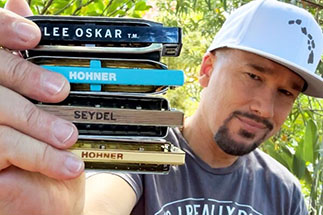
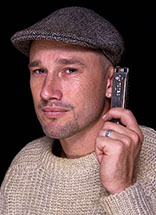
Return to the Top Index of This Webpage

Discoveries, Insights, Epiphanies
Diatonic Harmonica
Discoveries #1 (July 1, 2024)
During the past six months I have used harmonica books for practice, learning, and research. Most harmonica books feature harmonica music in the Key of C. A special harmonica musical tablature is used (showing hole to play, and whether to blow or draw on that hole.) Standard sheet music is also used in many cases with the harmonica tablature. I am now using sheet music without the harmonica tablature notation. I am learning to read and play using standard sheet music in the Key of C and Low C.
I use the following two books for learning to read and play harmonica music using modified musical sheet music - each note/pitch includes a small letter: CDEFGABC. This letter helps me learn the notes. These books have no standard harmonica tablature notation.
Easy Piano Sheet Music for Kids. By Avgusta Udartseva. 2021, 112 pages. VSCL.
Easy Piano Songs for Kids. 2024, 103 pages. VSCL.
Use of Your Hands on a Harmonica
Discoveries #2 (July 8, 2024)
I have been diligently working on learning to read standard music notation, sheet music, when
playing the harmonica. I had been using for many years the harmonica tablature notation showing what hole to blow or draw into. Sheet music notation tells me what note to play and the duration and sequence of the notes played. Most diatonic harmonica music books have lessons using a C Major harmonica, the sheet music for each song, and under each note the harmonica tablature. I focus now on the sheet music and ignore the harmonica tablature. I am using the book 'Easy Piano Sheet Music for Kids', by Avgusta Udartseva, while learning, which does not include harmonica tablature; also, I like using "Super Easy Harmonica Sheet Music for Beginners" by Troy Nelson.
For me, what are the benefits of reading standard musical notation (sheet music):
1. A better sense of the flow and timing of a composition.
2. There is far more sheet music without harmonica tablature that is readily available.
3. Following traditional musical learning using sheet music is very valuable, and essential for real progress in music playing.
4. Learning to connect names of notes (CDEFGABC) with positions on the sheet music, and connecting these with diatonic harmonica holes for blow or draw notes (20 notes on a 10 hole diatonic harmonica).
5. Learning to read sheet music more efficiently, effectively, knowledgeably, and beneficial for playing properly.
6. I am learning more musical theory each day.
7. The visual spacing of the notes on the sheet music is more useful to precise playing and improving one's anticipation and timing.
8. Improves my learning how to play better.
9. I enjoy learning challenges, tests, new methods and techniques.
10. It is intellectually and emotionally satisfying
to make progress in playing music.
11. The challenge of new ways of looking and seeing; new ways of communicating with symbols.
12. Harmonica tablature can be useful, but must be left behind for real progress to occur.
This has been a significant and trans-formative learning experience for me! Why did I wait so long to learn how to read and play from sheet music? Why did I not take classes from a music teacher? Why did I not take community college or private classes in musical theory and education? Nevertheless, this is all just muddy water gone past under the bridge for a 78 year old man playing the harmonica on his own. I must focus on learning NOW, and ignore my regrets and failings. PRACTICE NOW and enjoy myself.
I mostly play a Hohner Crossover Marine Band Harmonica in the Key of C and a Hohner Thunderbird the Key of Low C.
Why do I play a diatonic harmonica rather than a chromatic harmonica?
Return to the Top Index of This Webpage

Diatonic Harmonicas - Purchasing, Sources
Oskar, Lee. Enterprises: Albums, Art, Information, Harmonicas (Tombo)
Polar
Harmo
Fender
Why do I play a diatonic harmonica rather than a chromatic harmonica?
Acquisitions Sources: EBay, Amazon, Google
Remember, costs cited must include retail price, State sales tax, and shipping.
Harmonica Repair Kit, Harmo Pocket Kit, 12 in 1 Portable Tool, $56.00, VSCL.
Harmonica Neck Holder by Konig and Meyer, $24.00, VSCL.
Harmonica Repair Chart, VSCL.
Make Your Harmonica Work Better. By Douglas Tate. 56 pages, 1999. VSCL.
For a true Harmonica Beginner, I recommend: 1) Purchase a 10 hole diatonic harmonica in the Key of C Major; 2) purchase a 10 hole diatonic harmonica instruction manual and songbook; 3) Practice Daily.
For under $150, you will be kept busy learning for a year.
Also, your can use many online video harmonica instructions on UTube and elsewhere.
For your second harmonica purchase, I recommend purchasing a 10 hole diatonic harmonica in the Key of C Major Low. See my comments about Low Key Harmonicas. Compare the sounds of the C Major and C Major Low diatonic harmonicas! I favor the Low C Major Key harmonicas.
I have purchased and have been gifted many diatonic and two chromatic harmonicas. I have used harmonicas made by Hohner and C. A. Seydel Shone in Germany, by Suzuki and Lee Oskar Tombo in Japan, and EastTop and Swan in China.
Over the past few decades, I have acquired (through gifts and purchases (new & used)) various high quality
10 Hole Richter tuned diatonic harmonicas in the
Keys of C and Low C,
such as:
Hohner Crossover Marine Band Key of C Major $76
Hohner Thunderbird Key of Low C Major $135
Hohner Progressive Rocket Key of Low C Major $85
Hohner Special 20 Progressive Marine Band Key of C Major $59
C. A. Seydel Sohne Blues Session Key of C Major $45
C. A. Seydel Sohne 1847 Low Tone Bold Body Key of Low C Major $100
C. A. Seydel Blues Session 1847 Steel Key of Low C
Major $63
Suzuki ProMaster MR 350 Key of C Major $75
Suzuki Manji Silver M-20 Key of Low C
Major $74
Lee Oskar Tombo Key of C Major $53
Lee Oskar Tombo Key of Low C Major $53
Easttop Blues Key of C Major $27
EastTop Forerunner Chromatic Harmonica in the Key of Low C Major. 12 Holes, 48 Tones $125
EastTop Forerunner Chromatic Harmonica in the Key of C Major. 12 Holes, 48 Tones $52
Easttop Tremolo Harmonica, 24 Holes, Key of C Major, Richter Tuning $55
Fender Blues Delux
Key of C Major $13
Seydel Sohne Soloist Pro, 12 Holes, Solo Chromatic Tuning - Not Richter,
Key of C Major $148
Hohner Melody Maker Progressive, Tempered Tuning with Richter layout, Key of C $63
In the Autumn of 2024, using 10 hole diatonics only, I mostly played a Hohner Thunderbird or Rocket in the Key of Low C Major, a Hohner Crossover in the Key of C Major, and a Lee Oskar Tombo in the Key of Am.
"The passion for your instrument is a hallmark of devoted and accomplished musicians, and knowing your instrument inside and out is an important part of musicality."
- Christopher Sutton
C Major Diatonic Harmonica: Chords, Holes, Notes
C Major Diatonic Harmonica: Chords, Holes, Notes (PDF)
I do own one or two harmonicas (costing under $50.00) in many different Keys, but I focus on using the higher end ($80.00 to $160.00) in the C Major and Low C Major Keys. I use the Hohner Crossover C Major Key diatonic harmonica for daily practice and learning. You get used to the sounds by listening carefully. You have a better sense when you have used the right or wrong notes by the sound on a familiar C Major Key harmonica.
If you spit a lot of saliva while playing, stick with a plastic comb diatonic harmonica. Since I don't have much saliva flow while I am playing, I can use the wood comb harmonicas from Hohner.
After you have "mastered" a composition or song in the Key of C Major, and can play it from memory with confidence, then you can play the same composition on a Low C harmonica. You can also play the same composition or song in a harmonica of a different Major Key (A B D E F G) of any diatonic harmonica, because you use the same sequence of blow/draw holes for playing; although the sound of that composition or song in other Keys might not be as pleasing to the ear because of the changes in pitches/notes used.
Harmonica Keys for Beginners by Lucas Clebsch (Luke)
Various Harmonicas in the Key of C Major
I have little experience with using a a chromatic harmonica. However, I greatly enjoy listening to chromatic harmonica recordings by Gianluca Littera, Larry Adler, or Toots Thielemans.
Harmonica Studies by Michael Garofalo
Return to the Top Index of This Webpage


Harmonica Music: Musicians, Albums, MP3s, CDs, Online, Videos,
Recordings, Instructions
Diatonic Harmonica
Adler, Larry. Mr. Harmonica Legend. MP3. VSCL.
Adler, Larry. UTube Video, 12 minutes.
Best Blues Rock Musicians. UTube Video, 12 minutes.
Buddy Greene, Medly. UTube Video, 5 minutes.
Buddy Greene, Medly. UTube Video, 24 minutes.
Carlos del Junco. Blues Mongrel. CD Disk. VSCL.
Discography of Blues Bests, History of Blues Harmonica in "Blues Harmonica for Dummies." By Winslow Yerxa. Wiley, 2020, 384 pages. Paperback and EBook. VSCL.
Harmonicats. Medly. MP3. VSCL.
Gianluca Littera, Solo: Harmonica on Harmonica. 2024. Classical Music. VSCL. Excellent!
Gianluca Littera, Concertos for Harmonica and Orchestra. 2013. Classical Music. VSCL.
Lucas Clebsch (Luke) - Playing Country Roads Video Instructions
Lucas Clebsch (Luke) - 100 Songs with Harmonica Tabs
Mundharmonika Quartet from Austria
Howard Levy. Tonight and Tomorrow. MP3. VSCL.
Blowing Off the Dust: Modern Masters of the Blues Harp. By Paddy Mills.
Night Blues LA Groove, Blues Harmonic Ballads: Melodic Soul Serenades. MP3. VSCL.
Oskar, Lee. Best. MP3. VSCL.
Oskar, Lee. She Said Mahalo, MP3, 2023. VSCL. One of my Favorites!!
Oskar, Lee. Funky Rhetoric. UTube. 2023.
Oskar, Lee. Enterprises: Albums, Art, Information
Seven Best Harmonica Players. UTube Video, 7 minutes.
Juzzie Smith, My Coolest Harmonica Solo
Toots Thielemans. CD Album to MP3 Rip. VSCL.
VSCL = Valley Spirit Center Library, i.e., part of my personal home library and digital
collection in Vancouver, Washington, in 2024.
Harmonica Studies by Michael Garofalo
Women Harmonica Players - All Styles
Women Who Play the Harmonica Website
Female Harmonica Players, Teachers, Composers or Authors
Cheryl Arena, Kat Baloun, Christelle Berthon, Maria Coyote, Trina Hamlin, Louise Hoffsten, Lynn Ann Hyde, Tracy K, Beth Kohnen, Mildred Mulcay, Big Nancy, Heidi Newfield, Octavia, Roxy Perry, Mattie Phifer, Rachelle Plas, Geneva Red, Annie Raines, Kellie Rucker, Indiara Sfair, Big Mamma Thornton, Sandra Vazquez.
Male Harmonica Players, Teachers, Composers or Authors
Larry Adler, Max De Aloe, Lydon Anderson, DeFord Bailey, Don Baker, Steve Baker, David Barrett, Carey Bell, Pat Bergeson, Blackfoot, Mr. Bloe, Sugar Blue, Olaf Bohme, Billy Branch, Big Bill Broonzy, Norton Buffalo, Willi Burger, Paul Butterfield, Mike Caldwell, William Clark, James Cotton, Paul DeLay, Grant Dermody, Hermine Deurloo, Magic Dick, Phil Duncan, Bob Dylan, Rick Estrin, Gerry Fierro, Joe Filisko, PT Gazell, J. Geils Band, William Galison, Buddy Greene, Sigmund Groven, Steve Guyger, Adam Gussow, Beatbox Harmonica, Harmonicats, Mathias Heise, Lightnin' Hopkins, Big Walter Horton, Little Walter Jacobs, Flip Jers, Jelly Roll Johnson, William Lee Johnson, Carlos Del Junco, Yuri Lane, Charles Leighton, CY Leo, Howard Levy, Gianluca Littera, Lucas Clebsch (Luke), Gregoire Maret, John Mayall, Mel Bay, Charlie McCoy, Brownie McGhee, Terry McMillan, Hendrik Meurkens, Tommy Morgan, Charlie Musselwhite, Darrell Mulisch, Sugar Ray Norcia, Elin Luffar Lo Oberg, Paul Oscher, Lee Oskar, Tod Parrot, Rod Piazza, Roly Platt, John Popper, Brendon Power, Yvonnick Prene, Micky Raphael, Tommy Reilly, Konstantin Reinfeld, Jason Ricci, Tad Robinson, Shane Sager, Lee Sankey, John Sebastian, Antonio Serrano, Ronnie Shellist, Hank Shreve, Richard Sleigh, Gary Smith, George Smith, Juzzie Smith, Greg Szlapczynski, Sonny Terry, Toots Theilemans, Tommy Thompson, T-Bone Walker, Little Walter, Liam Ward, Muddy Waters, Mark Wenner, Junior Wells, Will Wilde, Wildsang, Sony Williamson III, Phil Wiggins, Allan Wilson, Kim Wilson, Stevie Wonder, Winslow Yerxa, Fred Yonnet.
As for the BEST or VERY BEST harmonica musician, teacher, or author ... depends on your criteria, standards, personal preferences, personal experience, knowledge, expertise, commercial interests, friends, and teachers. Any beginner, like me, is unqualified to recommend "The Best!"
Listen and Learn from a FEW Noted Harmonica Musicians:
Howard Levy (1951-), Larry Adler (1914-2001), Lee Oscar (1948-)
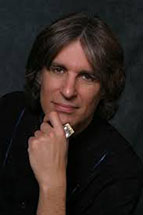

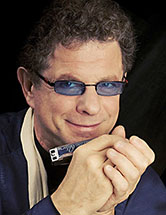
Toots Theileman (1922-2019), Adam Gussow (1958-), Sonny Terry (1911-1986)

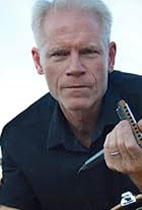

Little Walter Jacobs (1930-1968), James Cotton (1935-2017), Buddy Greene (1953-)
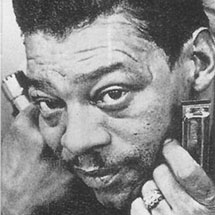
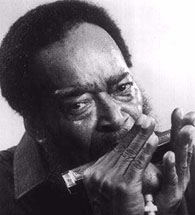
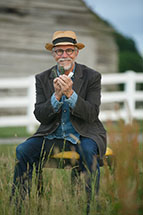
"Big Momma" Thornton (1926-1984), Annie Raines (1969-), Carlos del Junco (1958-)
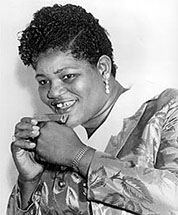
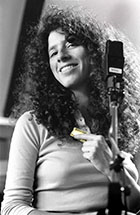

John Popper (1967-), Stevie Wonder (1950-), Bob Dylan (1941)
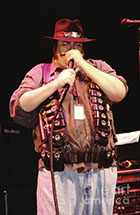
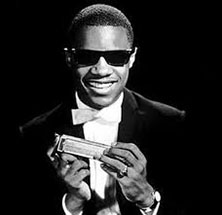
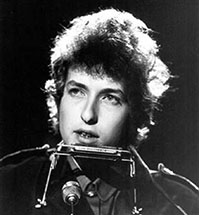
Sony Williamson III (1912-1965), Harmonicats (1950-1970), Indiara Sfair (1980-)
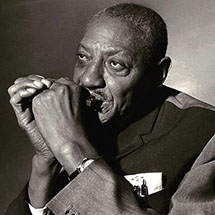
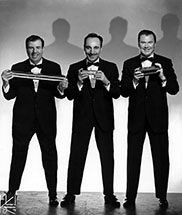

Gianluca Littera (1960?-), Joe Filisco (1955-)


Return to the Top Index of This Webpage
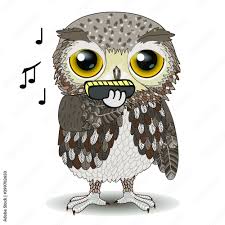
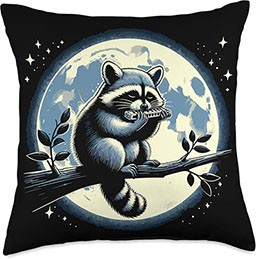

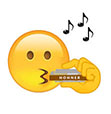
Low Key Diatonic Harmonicas
I own and play various diatonic 10 hole harmonicas in the Low Keys:
Hohner Diatonic Thunderbird Key of C Major Low $135
C. A. Seydel Sohne 1847 Bold Body Low Tone Key of Low C Major $100
C. A. Seydel Blues Session 1847 Steel Key of Low C
Major $63
EastTop Forerunner Chromatic Harmonica in the Key of Low C. 12 Holes, 48 Tones, $125
Suzuki Manji Key of Low C Major
$74
Lee Oskar Tombo Key of Low C Major $53
Hohner Progressive Rocket Key of Low C Major $85
Hohner Thunderbird Key of Low A Major $135
Hohner Thunderbird Key of Low G Major $135
Lee Oskar Tombo Key of Low D Major $53
Lee Oskar Tombo Key of Low E Major $53
Seydel Sohne Blues Soloist Key of Low F Major $65
Lee Oskar Tombo Key of Low F Major $53
In the summer of 2024, I mostly played a C Major LOW diatonic harmonica using the Hohner Thunderbird Low C, the C. A. Seydel Sohne 1847 Body Body Low tone of C Major Low, and the Easttop Chromatic 12 Hole harmonica in the Key of C Major Low.
I just like the sound of these Low Major Key harmonicas.
Easier, for me, to cleanly, gently and harmoniously play on the upper four holes (7-10) in a Low Key harmonica. These four holes/notes in a Low Key are tuned an octave lower than in a Major Key. The upper four holes/notes are not so shrill or tinny or harsh sounding to me from a Low Key.
Every skill acquired in practicing on a C Major diatonic harmonica is immediately transferable to the Low C Major diatonic harmonica. The Low C offers lower octaves.
Part of this, of course, is just due to my lack of higher skills or expertise in playing the upper four holes in any harmonica.
The first four holes/notes in a Low Key harmonica are also an octave lower in pitch than in a Major Key. Some say its a "growly" or "angry" LOW sound. I sense a more melodious, deeper, wistful, softer, calmer, earthier, plaintive, and richer low sound. Beautiful!

"The lower the lowest note on a harmonica, the lower the whole harmonica sounds and feels. A low harmonica sounds deep, lush, dark, and quieter. At the same time, it does not respond as quickly as a higher-pitched instrument; the reeds weigh more and they vibrate slower. ... Low keys extend much farther than high keys. Both players and listeners are thrilled to hear a tiny harmonica start to sound like a saxophone or even a bass, and low keys extend from Low F through Low E, Low Eb, low D, Low C, Low Bb, Low A, low G, and even Double Low F, two octaves below a regular F-harp (and also the quietest harp). Seydel offers several models in extended low tunings, and Hohner now offers its specially designed Thunderbird series of extended low tunings."
- Winslow Yerxa, Blues Harmonica for Dummies, p. 22
Hohner Marine Band Thunderbird Harmonicas Improvements by Joe Filisko, Howard Levy, and Steve Baker.
Hohner Thunderbird Harmonicas at Amazon
Shaman Drum Thunderbird, American Indian Drum, by Firlar 10", Art, PercI, $24.00. VSCL.
Thunderbird Myths, Stories, Legends
Olympic Peninsula, Washington, USA
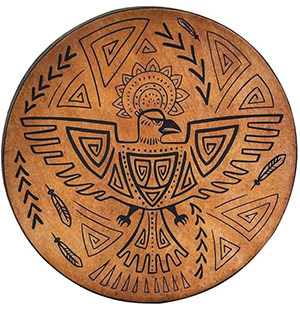

Shaman Drum Eight Points, American Indian Drum 15", Art, PercI, $85.00, VSCL.
The Low Key harmonicas by Hohner, Lee Oskar, Seydel, Easttop, and Suzuki all have merits and pricing from $55.00 to $200.00 per decent harmonica.
Joe Filisko on Playing Low-Tuned Harmonicas Part 1
C Major Diatonic Harmonica: Chords, Holes, Notes (PDF)
Harmonica Tablature for Hundreds of Songs: Harptabs.com
C Major Diatonic Harmonica: Chords, Holes, Notes
Return to the Top Index of This Webpage

Listening
Hearing, Sounds, Silence, Paying Attention
Listen Once, Listen Twice, Humming the Tune, Humming the Tune and reading the sheet music,
breakdown and study of measure by measure, Listening, Working on the Whole composition, Repetition, Recording Your Performance, Listening Again and Again, Memorization
Daily Studies for Diatonic Harmonica. By David Barrett. Mel Bay, 2019, 40 pages. +AV. VSCL.
Sounds, Listening, Hearing, Silence, Speech, Music. Edited by Michael P. Garofalo.
The Five Senses. Edited by Michael P. Garofalo.
Music: Albums MP3 Videos of Harmonica Players
This is Your Brain on Music: The Science of a Human Obsession. By Daniel J. Levitin. Dutton, 2006, 335 pages, index, bibliography, appendices. VSCL.
Alfred's Essentials of Music Theory: A Complete Self-Study Course for All Musicians. By Andrew Surmani, Karen Farnum Surmani, and Morton Manus. Alfred, 2004, 152 pages. +AV. VSCL.
Return to the Top Index of This Webpage
The Creative Act: A Way of Being. By Rick Rubin. Penguin, 418 pages, 2023. VSCL
Creativity, Inc. Overcoming the Unseen Forces that Stand in the Way of True Inspiration. The Expanded Edition. By Ed Catmull with Amy Wallace. Random House, 2023, index, 482 pages. VSCL.
You're Not Listening: What You're Missing and Why It Matters. By Kate Murphy. 2021, 304 pages. VSCL.
Listening to Music. By Craig Wright. 2013, 7th Edition, 512 pages.
Essential Ear Training for Today's Musician. by Steve Prosser. 200, 32 pages. VSCL.
"Listening is being able to be changed by the other person." - Alan Alda
"To become a better listener, here some key actions to perform: Pay attention. Show that you are listening. Defer judgment. Provide feedback. Respond appropriately."
"You must be nothing but an ear that hears what the universe of the world is constantly saying within you."
- Rabbi Dov Baer of Mezritch
Jonah Fox, The Scales Cheat Sheet, PDF
"Active listening in the workplace: Listen at least as much as you talk. Listening is a sign of respect. Never stop listening. Learn by listening. Listening open and actively. Learn to bite your tongue. Don't try to multitask. Use your eyes and your ears."
C Major Diatonic Harmonica Notes: Chords, Holes, Notes
Return to the Top Index of This Webpage

Blog Posts in the Cloud Hands Blog
Diatonic Harmonica
Chords for Keys of C, G, A, and D
Reading Sheet Music for Harmonica: Discovery #2
Harmonica Studies by Michael Garofalo
C Major Diatonic Harmonica Notes: Chords, Holes, Notes (PDF)
Bye Bye Birdie by Sony Boy Williamson III
C Harmonica: Chords, Holes, Notes
G Harmonica: Chords, Holes, Notes
Purchasing a new Android Tablet
"The Weight" by The Band ... Put the Load Right on Me, Key of A
"I Just Called to Say I Love You," by Stevie Wonder, Key of C
"This Land Is Your Land," by Woody Guthrie, Key of C
"Another Day in Paradise," Phil Collins, Key of C
Why do I play a diatonic harmonica rather than a chromatic harmonica?
"The Streets of Laredo," classic Cowboy Tune, Lesson by Liam Ward, Key of C
HAS = Harmonica Acquisition Syndrone
Return to the Top Index of This Webpage
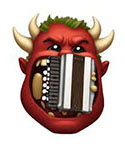
Blues Music on Diatonic Harmonica
I am practicing techniques for bending draw notes and cupping for effects, and learning Blues Scales, mostly on the C Key Hohner Crossover Marine Band harmonica.
Amateur Stuff!
Puckering mostly, and tongue block (embouchure techniques). I also play harmonicas in other Keys and Low Keys for fun ... for example, try some blues techniques with a Low D Oskar.
Playing the Blues on a harmonica is a very popular use of this instrument. As far as I know, a harmonica is the only wind instrument that uses both blows and draws for various notes.
Many Draws, Very Few Blows in many Blues composition.
Blues for Beginners. By Luke. 12-Bar Blues.
Blues for Beginners, Adam Gussow. UTube Video, 17 minutes.
Discography of Blues Bests, History of Blues Harmonica in "Blues Harmonica for Dummies." By Winslow Yerxa. Wiley, 2020, 384 pages. Paperback and EBook. VSCL.
Easy Blues Scales for Beginners By Lucas Clebsch (Luke)
Seven Easy Blues Harmonica Licks. By Tomlin Leckie.
Gussow's Classic Blues Harmonica Videos. By Adam Gussow.
Modern Blues Harmonica Website. By Adam Gussow.
Blowing Off the Dust: Modern Masters of the Blues Harp. By Paddy Mills.
Blues for Beginners, Adam Gussow. UTube Video, 17 minutes.
Best Keys for Playing the Blues
Use of Your Hands on a Harmonica
Return to the Top Index of This Webpage
The First Five Things Beginner Blues Harmonica Players Must Learn. By Tomlin Lecki. Breathing, Holding the Harmonica, Playing Train Rhythm Chords (Nnka Draw and Tuka Blow), Tapping your foot and keeping correct time, Playing clear and accurate notes by puckering pursing lips. Tilt the harmonica up, holes down.
Harmonica Masterclass: Exploring 1st Position (Complete Blues Harmonica Lesson Series). By David Barrett, 2015, 32 pages.
Blues Harmonica: A Complete Manual for Beginners and Professionals. By Tommy Morgan. 1987, 48 pages.
Blues Harmonica for Dummies. By Winslow Yerxa. Wiley, 2020, 384 pages. Paperback and EBook. VSCL.
3 Simple Blues Harmonica Riffs: Work Song, Bog Walter Shuffle, One Way Out. Instructions by Luke.
Jonah Fox, The Scales Cheat Sheet, PDF
C Major Diatonic Harmonica: Chords, Holes, Notes
Harmonica Tablature for Hundreds of Songs: Harptabs.com
Return to the Top Index of This Webpage

Quotations
Music, Listening, Sound, Learning, Practice, Diatonic Harmonica
"The basic elements of any sound are loudness, pitch (tone/note), contour,duration (or rhythm), tempo, timbre, spatial location, and reverberation." Chapter 1, What is Music
"Ten thousand hours of practice is required to achieve the level of mastery associated with being a world class expert - in anything." Chapter 7, Expertise Dissected
"Musical activity involves nearly every region of the brain that we know about, and nearly every neural subsystem. Different aspects of the music are handled by different neural regions - the brain uses functional segregation for musical processing, and employs a system of feature detectors whose job it is to analyze specific aspects of the musical signal, such as pitch, tempo, timbre, and so on." Chapter 3, Music and the Mind Machine
"Making music requires the coordinated, rhythmic use of our bodies, and that energy be transmitted from body movements to a musical instrument." Chapter 2, Foot Tapping: Discerning Rhythm, Loudness and Harmony
- Daniel J. Levitin, This is Your Brain on Music, 2006
"You have to take a deep breath, and allow the music to flow through you. Revel in it, allow yourself to awe. When you play, allow the music to break your heart with its beauty."
- Kelly White
"When you play, never mind who listens to you." - Robert Schumann
"Music sounds different to the one who plays it. It is the musician's curse." - Patrick Rothfuss
"You are the music while the music lasts." - T. S. Eliot
"It's easy to play any musical instrument: all you have to do is touch the right key at the right time and the instrument will play itself." - Johann Sebastian Bach
"Few occupations pass the solitary hours more fruitfully than the playing of a musical instrument."
- Stephen Hough
“Music is enough for a lifetime, but a lifetime is not enough for music.” - Sergei Rachmaninoff
Kettlewell, David; Cohen, Frederica. LOVE OF CHROMATIC HARMONICA...Techniques and Advice From The World's Best! (p. 20). Unknown. Kindle Edition.
"Change. But start slowly. Because direction is more important than speed." - Paulo Coelho
"The expert at anything was once a beginner." - Helen Hayes
"Use what talent you possess. The woods would be very silent if no birds sand there except those that sang best." - Henry Van Dyke
"Your personal history is a part of what happens with your hands and your head as you play music." - Dave Grohl
"I just have this real love and connection with what I'm doing when I play music." - Tash Sultana
"I speak music, I feel sound
When I walk down the street
My feet don't touch the ground
Am I dreaming or am I awake?
When I get this feeling
My soul it starts to shake
If I'm alone and no one is around
I can get lost in the world of sound surround.
Sound surrounds me
When I'm walking down the street
I feel the rhythms in the way I move my feet
I hear the melody in the trucks that go on by
I get harmony from the colors in the sky
It's a world that I'm glad I'm living in
It's called Music - Why don't you come on in?
- Howard Levy, Sound Surround, From Songs, Poems and Drawings, 2022, p. 81
"Don't Let Fear, Negativity, Self-Doubt, and Comparison with Experts Ruin Your Joy and Satisfaction in Playing Music: "You start a nice and easy solo and a little voice goes off in your head, "It isn't good enough! I have to play hipper. This should burn more. It has to be more complex..." or some thought like that. Whatever comes easily isn't good enough because, in your mind, you're not good enough."
- Kenny Werner, Effortless Mastery
"Here are some good general guidelines for practice.
1. Practice Daily (habit)
2. Practice is focused on what you cannot do (challenge)
3. Practice large passages by breaking them down into their component licks (chunking)
4. Don't fall into the trap of just playing songs you've already learned - this is not practice, it's repertoire retention."
- David Barrett, Daily Studies for Diatonic Harmonica
"To be able to play longer riffs and phrases, you need to string together some shorter riffs (i.e. triplet patterns). Don't be afraid to commit your own riffs/melodies to memory."
- Harmonica Lessons
"When you do something, if you fix your mind on the activity with some confidence, the quality of your state of mind is the activity itself. When you are concentrated on the quality of your being, you are prepared for the activity."
- Zen Master Shunryu Suzuki, Zen Mind, Beginner's Mind, Shambhala, 2006, p. 125.
"After silence, that which comes nearest to expressing the inexpressible is music." - Aldous Huxley
"Music produces a kind of pleasure which human nature cannot do without." - Confucius
"Music was my refuge. I could crawl into the space between the notes and curl my back to loneliness." - Maya Angelou
"Music is the emotional life of most people.”- Leonard Cohen
"Music is the language of the spirit. It opens the secret of life bringing peace, abolishing strife."
- Kahlil Gibran
"If there's any object in human experience that's a precedent for what a computer should be like, it's a musical instrument: a device where you can explore a huge range of possibilities through an interface that connects your mind and your body, allowing you to be emotionally authentic and expressive."
- Jaron Lanier
"The less there was of me, the happier I got."
- Leonard Cohen
"We don't stop playing because we grow old:
We grow old because we stop playing."
- George Bernard Shaw
"Music creates order out of chaos: for rhythm imposes unanimity upon the divergent, melody imposes continuity upon the disjointed, and harmony imposes compatibility upon the incongruous."
- Yehudi Menuhin
"The Harmonicas for Health program, from the COPD Foundation, created by respiratory therapists, teaches patients to mimic pursed-lip breathing which may make breathing easier and lessen the stress of not being able to breathe well. Shortness of breath is one of the most common symptoms of chronic lung disease."
- COPD Foundation
"Music can lift us out of depression or move us to tears – it is a remedy, a tonic, orange juice for the ear. But for many of my neurological patients, music is even more – it can provide access, even when no medication can, to movement, to speech, to life. For them, music is not a luxury, but a necessity."
- Oliver Sacks
"Each time you play music, it becomes new. This is one way I’ve been thinking about memory and the present, past and future times all fitting together. I called it an exquisite moment. It’s an exquisite moment because the audience and the situation of performing allows us, requires us, to think of that moment. Very often we go through life without thinking about that moment. We talk about mindfulness but we’re not very mindful, most of us.”
- Philip Glass
"Music is the only thing we can engage with that activates every part of our brain."
- Annie Heiderscheit
"The idea of music having a use goes back centuries. The beginnings of written-down music was the liturgy, and obviously that has a connection with the idea of a meditative state and all of that. So music can really be useful in that way.”
- Max Richter
"1) Learning the harmonica has a host of health benefits. 2) The harmonica has been known to improve cognitive abilities. 3) To enhance your memory. 4) It improves one’s time management capabilities. 5) The harmonica does wonders for respiratory issues. 6) Enhance your coordination. 7) The harmonica can improve your mathematical skills. 8) It instills discipline and commitment. 9) Used as a stress reliever. 10) You can play it anywhere."
- Ten Reasons Why You Should Learn to Play the Harmonica
"Mastery is comprised of two things: 1) Staying out of the way and letting music play itself. And, 2) Being able to play the material perfectly every time without thought." (p.117) "Mastery is playing whatever you're capable of playing, every time, without thinking." (p.99) "Effortless Mastery, Effortless Execution, Practice to Perfection, Unfamiliar - Not Difficult, Master One Thing First, Master the Ego, Technical Mastery Creates Freedom, Rhythm, Mastery of Sound, Mastering the Body, Mastery is Available to Everyone, The Result: Connection to All Wisdom, Have Patience, There are No Wrong Notes, Fearless Expression. (pp.87-118)."
- Kenny Weerner, Effortless Mastery, 1996
Sounds, Hearing, Silence, Speech, Music. Edited by Michael P. Garofalo.
Society for the Preservation and Advancement of the Harmonica
The Five Senses. Edited by Michael P. Garofalo.
This is Your Brain on Music: The Science of a Human Obsession. By Daniel J. Levitin. Dutton, 2006, 335 pages, index, bibliography, appendices. VSCL. This fine book provides detailed explanations of the science of music and sound for a layperson. Outstanding ... something for all musicians and listeners of music. Mr. Levitin worked for many years as a recording engineer, record producer, and studio musician after the Berklee College of Music. Then, he became a neuroscientist, cognitive psychologist, and author.
Every Brain Needs Music: The Neuroscience of Making and Listening to Music. By Lawrence Sherman and Dennis Plies. 2023, 288 pages.
Music, Math, and Mind: The Physics and Neuroscience of Music. By David Sulzer. 2021, 204 pages.
From Perception to Pleasure: The Neuroscience of Music and Why We Love It. By Robert Zatorre. 2023, 368 pages.
Life in Tune: Personal Transformation Through Music and Mindful Mastery. By Barry A. Lehman. 2021, 308 pages. FVRL.
The Little Book of Talent, 52 Tips. By Daniel Coyle. Bantam Books, 2012, 117 pages. How to succeed in learning a new skill or talent of any kind. VSCL.
The 14 Unshakable Laws of Learning Music. Dan Spencer. Kindle EBook, 2023. VSCL.
Effortless Mastery: Liberating the Master Musician Within. By Kenny Werner. 2000, 196 pages. Deals with the fear of playing music, fear of failure, overemphasis on rigid perfection, a performers function in social environments, spirituality, freedom in playing, technical mastery, surrender, loving music, etc. FVRL.
Alfred's Essentials of Music Theory: A Complete Self-Study Course for All Musicians. By Andrew Surmani, Karen Farnum Surmani, and Morton Manus. Alfred, 2004, 152 pages. +AV. VSCL.
Atomic Habits: An Easy and Proven Way to Build Good Habits and Break Bad Ones. By James Clear. 2018, 320 pages. VSCL.
The Practicing Mind: Developing Focus and Discipline in Your Life; Master Any Skill or Challenge by Learning to Love the Process. By Thomas M. Sterner. 2012, 148 pages. FVRL.
The Creative Act: A Way of Being. By Rick Rubin. Penguin, 418 pages, 2023. VSCL
The Complete Idiot's Guide to Playing the Harmonica. Book and Kindle EBook. +AV. VSCL.
Daily Studies for Diatonic Harmonica. By David Barrett. Mel Bay, 2019, 40 pages. +AV. VSCL.
Improvise for Real: Understand the Music You Hear. Play the Music You Imagine. By David Reed 2013, 240 pages.
C Major Diatonic Harmonica: Chords, Holes, Notes
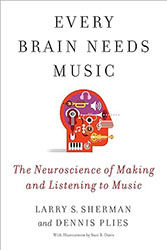
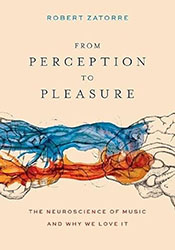
Return to the Top Index of This Webpage
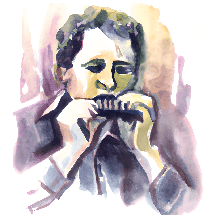

Techniques, Methods, Practices, Tricks, Riffs, Instructions, Tips
Diatonic Harmonica
Use of Your Hands on a Harmonica
How to Practice Music Meditation
Harmonica Tablature for Hundreds of Songs: Harptabs.com
C Major and C Major Low Diatonic Harmonicas
C Major Diatonic Harmonica: Chords, Holes, Notes
Cloud Hands Blog Posts about Harmonic Playing and Music
Jonah Fox, The Scales Cheat Sheet, PDF
Various Harmonicas in the Key of C Major
Lip Pursing vs Tongue Blocking by Tomlin
Books and Instruction Manuals for Playing the Harmonica
Scales Practice Lessons from Jonah Fox
Musical Practice and Developmental Pointers
Suggestions Harvested by Michael P. Garofalo
Tips from a Beginning Harmonica Player
August 2024
Find models, teachers, experts, and masters to inspire you and motivate you.
Don't play it until you get it right, play it until you can't play it wrong.
Visualize your becoming better, achieving more, being a success in your playing.
If you can play it slow, you can play it fast.
Each day, work on something new, something challenging, something to make you reach.
Be better than you were yesterday.
Daily focused practice is
better than once a week cramming jams.
Borrow or Steal the best techniques from the Best.
Practice, practice, PRACTICE, practice, practice, PRACTICE.
It takes three months to partially retrain and install new habits in our neuro-plastic brains.
Listen often to your favorite musicians.
The best time to start is today.
More time practicing with good timing/rhythm.
Listen, listen, listen, listen!
Impatience and rushing result in setbacks.
Plan for and set Desired Goals and SMART objectives.
SMART Objectives: Specific, Measurable, Achievable, Relevant, and Time-Bound.
Record your playing and listen to it.
Use a metronome or electronic keyboard to play rhythm patterns for practice.
Buying more harmonicas seldom improves your playing ability.
Don't be so hard, negative, and critical about your slow progress.
Be kinder and gentler towards yourself.
Listen carefully, sing/verbalize tune, Listen, Repeat.
Your brain and body can be retrained ... slowly.
Relax, loosen up, untighten, go smoothly with the flow.
Little by little, day by day ... progress is made.
If you hate playing and have no fun doing so ... then reevaluate your goals.
Get prompt feedback on your mistakes and faults in playing.
Progress is the most important product.
Listen, listen, listen, listen!
Keep dust, dirt, grime and food away from harmonicas.
Use many sources of good information from books, articles, or videos.
Practice the way you want to perform.
Keep your harmonicas safe and don't expose them to excessive heat or cold.
It takes a long time to sound like yourself.
Reading musical notation is very useful, expands your repertoire, and expands your mind.
Some good musicians play by ear and can't or don't read musical notation; but, maybe, not you.
Learning often involves reading; playing music often involves reading musical notation.
The moment when you want to quit is the moment you need to keep pushing.
Don't practice when your very tired.
Blow with less force, less loudness, less intensity.
Proceed part-by-part, chunk by chunk, measure by measure when learning.
Keep working, one day it will happen!
The harder I work, the luckier I get.
Learning to play music is like learning a language.
Challenge yourself little by little everyday!
There are right ways of learning, and wrong ways of learning.
Take more pleasure in your playing. Enjoy your efforts.
Listen, listen, listen, listen, LISTEN, listening.
Purchase good quality harmonicas.
Daily practice of mechanical skills without mistakes.
Hard work beats talent when talent does not work hard.
Pick up, harvest, gather, borrow, and steal from the Best.
Practice the harmonica scales daily!
Play in different key each day.
Play a harmonica, stop all smoking, and improve your lung function.
We are what we repeatedly do. Excellence, then, is not an act, but a habit.
First you have to want it; then the work begins.
Patience, steadfastness, and grit climbs the mountains of Learning.
Learn things slowly and accurately first, then gradually speed things up.
Practice only on the days that you eat.
Enjoy the process and results of playing music alone.
After you make mistakes, then slow down.
Find different ways to stay motivated to play.
There’s no glory in practice, but without practice, there’s no glory.
That’s not hard, you just haven’t practiced it enough yet.
Practice as if you were performing.
Controlling your breath is the most important key skill on the harmonica.
Breathe through your diaphragm - from your belly button.
A good teacher can take you to new levels in your progress.
Use your ears and listen while playing.
Hum, sing, vocalize the melody and rhythm at the start of a song.
Keep in Time, Keep in Time, Create the Beat, Flow on Time !!!! !!!! !!!!.
You are measured by what you give, not by what you have.
You practice and you get better. It’s very simple.
Close your eyes and flow with the music your
making.
Be good at both breathing out (blowing) and breathing in
(drawing) to play the best.
I am not telling you it’s going to be easy. I am telling you it’s going to be worth it.
Practice, practice, PRACTICE, practice, practice, PRACTICE.
Practice makes improvement. No one is perfect.
Get your blowing and drawing under equal control.
Make your plans to achieve your musical goals; then DO IT!
Jam with your favorite recordings.
If you are not having fun playing your instrument, then change the way you are learning.
Practice does not make perfect, practice makes progress.
Practice does not make perfect; perfect practice makes perfect.
Kick difficulties in the ass, and push them away.
Play with other people to develop your confidence.
Play more tunes that are easy for you to play.
Over 10,000 hours of practice leads to the highest degree of mastery.
Try a 'Fifteen Minutes Four Times A Day' routine of practicing.
Deep kiss your harmonica.
Give yourself three months to establish a new habit.
Cultivate, nourish, and grow your Dream Musical Goals!
Know when you need to study with a good teacher.
What you are not changing is what you are choosing.
Practice, practice, PRACTICE, practice, practice, PRACTICE.
Playing is the Path to Progress.
Improving your musical vocabulary, jargon, and theoory is essential to progress.
Connect with music through listening, creating, and understanding.
Collecting harmonicas or stamps or shells are fun hobbies for some people.
Brush your teeth before you play. Play with a clean mouth.
Use accompaniment software like Band in a Box while you play.
Learning to play well is like learning a new language - it takes many months and years.
Use music you love to listen to and play along with it.
Drink only water while playing with a clean mouth.
Value, respect, care for, and cherish your musical instruments.
Reinforcement, repetition, and daily practice develop the brain in new ways.
Keep your harmonicas in cases to protect them.
Many harmonicas are purchased, but few are played because note playing is difficult.
It's OK to improvise on songs you know.
Improvising is just plain good fun.
Strengthen your breathing muscles by playing a harmonica.
Slow down, relax your body, try, stop, stretch, rest, take a break, do pranayama, relax, take a nap, return to practice your music lesson.
Pace yourself for productive learning and change.
Don't be afraid to explore, to reach, to challenge yourself.
Get a good harmonica - one good one is sufficient for beginners.
Play at the edges of the smooth road, off road, to test your limits and improve.
Return to the Top Index of This Webpage


Other Harmonicas
Chromatic, Tremolo, Chordal, Bass, Variant Tunings
Richter Tuned Diatonic Harmonica
For beginners, I recommend learning to play a diatonic harmonica in the Key of C Major. This standard harmonica, Richter tuned, is made by Easttop, Swan, A.C. Seydel, Suzuki, Lee Oskar Tombo, and Hohner.
Other types of harmonicas include:
I like to free sound play, do rhythm riffs, and improvise on a tremolo harmonica:
Easttop Tremolo Harmonica 24 Holes Key of C $56.00.
Easttop Tremolo Harmonica 24 Hones Key of G $56.00.
Swan C/G Tremolo Harmonica, 24 Holes, Key of C/G. $26.00.
It is my understanding that tremolo harmonica playing is very popular in East Asia.
A very large harmonica played by holding the ends with the hands.
Little or no hand cupping options.
Chromatic Harmonica

I have very little experience with using a chromatic harmonica. I have purchased two chromatic harmonicas in the Key of C Major, 12 holes, 48 tones/notes, in the past. I have considerable experience with diatonic harmonicas.
After playing the chromatic harmonica for a year, after studying, learning, and using the different layouts for blow/draw notes/holes (Richter vs Solo), after listening to the different sound of the diatonic and chromatic, after sensing the different feel of the size and shape of these two types of harmonicas, and after experimenting with the slide, etc.; I've come to a conclusion. I have decided to focus on playing, learning, and advancing my musical skills in using only a diatonic harmonica.
I have decided not to play a chromatic harmonica anymore. Why?
All chromatics are much larger and heavier than a diatonic. They are considerably less portable than a Hohner Thunderbird or Hohner Rocket diatonic. Most good chromatics have 12 or 16 holes, and diatonics have 10 holes. A typical chromatic is not a carry in your pocket anywhere harmonica, they are more a carry in your backpack musical instrument.
A chromatic, in my opinion, does not play chords as well as a diatonic harmonica.
If you can't manage the chromatic's slide well, then a chromatic can sound really bad. A diatonic is more forgiving of mistakes.
I do enjoy experimenting with a wider ranges of notes/sounds available on the chromatic harmonica vs a diatonic harmonica (48 notes vs 20 notes without bends or overblows); however, I find that using my decent electronic MIDI keyboard offers vastly more experimental options for an adventuresome sound explorer.
Good chromatic harmonicas are typically more expensive than good diatonic harmonicas. Some good chromatic models cost from $150.00 - $250.00 or more. A decent diatonic harmonica can be purchased for under $50.00.
Both chromatic and diatonic harmonicas are available in a variety of different keys, both in standard and low tuned. However, most good chromatics come in the Key of C Major. And, with a higher degree of skill, you can play in many keys on one C Major Key chromatic. However, in my opinion, it is just far easier to play a diatonic in the key you want to play, rather than mastering playing in different keys on one chromatic harmonica.
It is easier to bend or overblow on a diatonic harmonica, rather than on a chromatic without using the slider. Seems to me that the degree and control of notes with bends and overblows, excluding slider functions, is more capable of refinement on a diatonic, especially for Blues.
Chromatics are favored by classical and jazz harmonica musicians. Diatonics are favored by blues, rock, folk, and country musicians. I play tunes I enjoy the most being played on a diatonic harmonica.
Using the chromatic slider properly is a refined skill requiring considerable practice, and adds another challenging layer of refined learning and practice demands for typical home solo players.
In is far easier to us a variety of cupping techniques on a diatonic, rather than on the larger chromatic.
Shifting between chromatic and diatonic versions can be confusing for beginners like me. Better to focus on playing just one type of musical instrument. I chose the diatonic harmonica. Goal setting requires excluding some activities less immediately useful to one's specific progress objectives.
I first played a diatonic, so my mouth and lips are familiar with the smaller diatonic.
I will continue to keep the two chromatic harmonicas I own, and will try to play them some in the future.
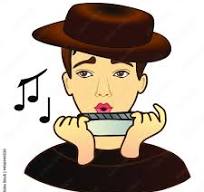
I own a EastTop Forerunner Chromatic Harmonica in the Key of C Major LOW. 12 Holes, 48 Tones, Chromatic Mouth Organ Harmonica, $125.00. VSCL.
I own a EastTop Forerunner Chromatic Harmonica in the Key of C Major. 12 Holes, 48 Tones, Chromatic Mouth Organ Harmonica, $52.00. VSCL.
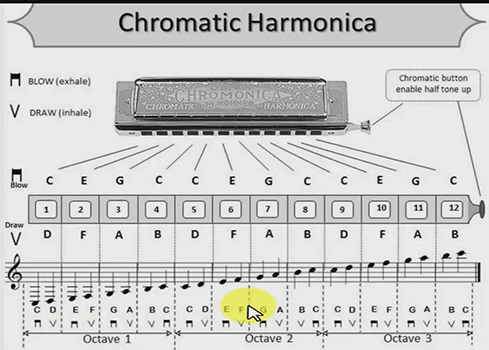
Chromatic Harmonica in the Key of C Major
Chords and Notes on a C Major 12 Key Chromatic Harmonica
I C Major CEG (Blow Holes 123 or 567 or 9 10 11 or any 3 adjacent holes)
IV F Dyad FA (Draw 23 and Draw 67 and Draw 10 11)
V G BD (Draw 45 and Draw 89) or DF (Draw 12 and Draw 56 and Draw 9 10)
G7 BDF (Draw 456 and Draw 89 10)
Dm DFA (Draw 123 and Draw 567 and Draw 9 10 11)
Bb BDF (Draw 456 and 89 10)
Cross Harp 2nd, Play on F Key diatonic harmonica.
Key Signature: No Sharps and No Flats: C Major or A minor.
C Major Diatonic Harmonica: Chords, Holes, Notes.
Books, Lessons, Manuals, Instructional Books
Chromatic Harmonica
Chromatic Harmonica Songbook. By Thomas Balinger. 2016, 119 pages, $10.00. VSCL.
Berklee Chromatic Harmonica Method Foundations for Jazz. By Thaddeus Hogarth. Berklee Press, 2018, 96 pages, $25.00. +AV.
Chromatic Harmonica - Wikipedia
Complete Chromatic Harmonica Method. By Phil Duncan. 2015, 124 pages. $26.00.
Exploring the Three Types of Harmonicas
Harmonica Techniques - Wikipedia
The Hal Leonard Complete Harmonica Method - Chromatic Harmonica Book. By Bobby Joe Holman. Hal Leonard, 2002, 64 pages, $16.00. +AV. VSCL.
Love of the Chromatic Harmonica: Techniques and Advice from the World's Best. By David Kettlewell and Frederica Cohen. 680 pages, 2016. EBook, $10.00. VSCL. I think this is an outstanding resource for chromatic players.
Method for Chromatic Harmonica. By Max De Aloe. Sher Music, 2021, 240 pages. +AV. VSCL.
Society for the Preservation and Advancement of the Harmonica
Why I Don't Practice with a Chromatic Harmonica
VSCL = Valley Spirit Center Library, i.e., part of my personal home library and digital
collection in Vancouver, Washington, in 2024.
Musicians and Recordings
Chromatic Harmonica
I have greatly enjoyed listening to chromatic harmonica recordings by Gianluca Littera, Larry Adler, and Toots Thielemans.
"Famously accomplished chromatic harmonica players include: Larry Adler, Willi Burger, Max De Aloe, Norton Buffalo, William Galison, Sigmund Groven, Mathias Heise, Gregoire Maret, Hendrik Meurkens, Yvonnick Prene, Tommy Reilly, Antonio Serrano, Toots Thielemans, and
Stevie Wonder." - Wikipedia
Gianluca Littera, Solo: Harmonica on Harmonica. 2024. Classical Music. VSCL. Excellent!
Gianluca Littera, Concertos for Harmonica and Orchestra. 2013. Classical Music. VSCL.
Adler, Larry. Mr. Harmonica Legend. MP3. VSCL.
Harmonicats. Medly. MP3. VSCL.
Toots Thielemans. CD Album to MP3 Rip. VSCL.
Quotations, Notes, Information
Chromatic Harmonica
"The chromatic harmonica is a type of harmonica that uses a button-activated sliding bar to redirect air from the hole in the mouthpiece to the selected reed-plate desired. When the button is not pressed, an altered diatonic major scale of the key of the harmonica is available, while depressing the button accesses the same scale a semitone higher in each hole. Thus, the instrument is capable of playing the 12 notes of the Western chromatic scale. The chromatic harmonica can thus be contrasted with a standard diatonic harmonica, which can play only the notes in a given musical key." - Wikipedia
Chord Harmonicas
Bass Harmonicas
Why do I play a diatonic harmonica rather than a chromatic harmonica?
Return to the Top Index of This Webpage
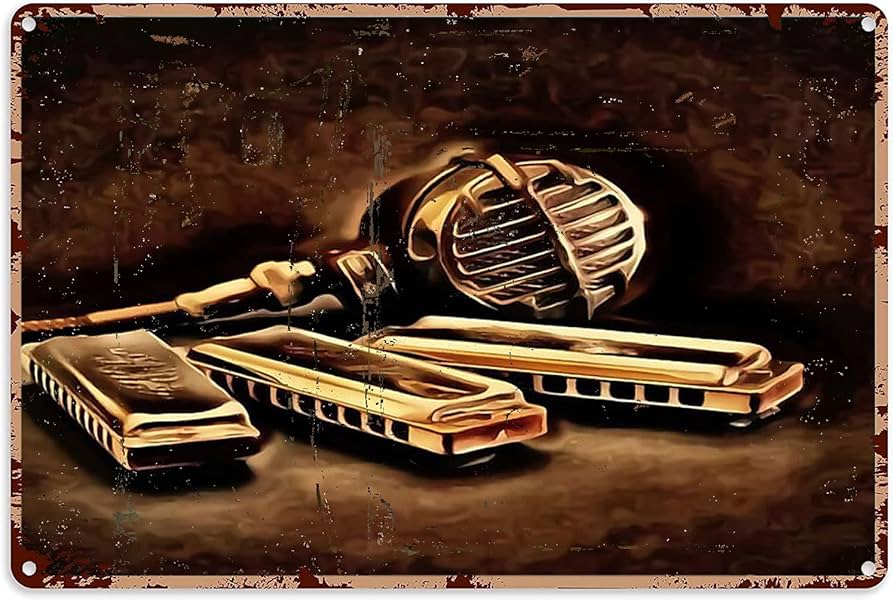
Improvisation on a Diatonic Harmonica
Improvisation, Free Play, Creative Playing, Playing by Ear,
Experimental Playing, Playing Alone for Pleasure and Relaxation,
Exploration of Sounds, Using Musical Theory, Solo Fun,
Interpretation, Reinterpretation, Revision
Harmonica Lessons from Beginner to Advanced: Original Harmonica Method of Learning to Play and Improvise. By Anton Davydov. 2024, 65 pages. +AV. VSCL.
Improvise for Real: The Complete Method for all Instruments. Understand the Music You Hear. Play the Music You Imagine. By David Reed. 240 pages, 2013. +AV. VSCL.
Musicality: How You Too Can Learn Music Like a Gifted Prodigy, Unlock Your Musical Instinct, and Unleash Your Inner Natural. By Christopher Sutton. 864 pages, Musical U, 2024. Kindle E-Book. VSCL. +AV. 15 Skills: Talking Music (Jargon, Terms, Concepts); Singing in Tune; Having Good Rhythm; Keeping the Beat; Understanding Musical Theory; Reading Notation (Sight Reading, Playing From a Lead Sheet); Writing Music; Writing Notation; Improvising; Playing by Ear; Jamming; Performing Live; Knowing Your Instrument Inside and Out; Tuning Your Instrument by Ear; Playing More than One Instrument. 4H: Head, Hands, Hearing, Heart.
Alfred's Essentials of Music Theory: A Complete Self-Study Course for All Musicians. By Andrew Surmani, Karen Farnum Surmani, and Morton Manus. Alfred, 2004, 152 pages. +AV. VSCL.
Essential Ear Training for Today's Musician. By Steve Prosser. 200, 32 pages. VSCL.
Becoming Talented: A Systematic Method for the Development of Ear Training and Music Reading Skills. By Isador Miller. 196 pages, 2024.
How to Read Music in 30 Days. Kindle EBook. VSCL.
Effortless Mastery: Liberating the Master Musician Within. By Kenny Werner. 2000, 196 pages.
Life in Tune: Personal Transformation Through Music and Mindful Mastery. By Barry A. Lehman. 2021, 308 pages. FVRL.
The Music Lesson: A Spiritual Search for Growth Through Music. By Victor L. Wooten.
288 pages, 2008.
Society for the Preservation and Advancement of the Harmonica
Music Theory for Dummies. By Michael Pilhofer. Wiley, 2019, 321 pages. VSCL.
Five Basic Principles to Follow to Improve Improvisation Skills:
1. Listening more than playing.
2. Play by heart more than playing tablature.
3. Picking up by ear more than playing what you've learned from tablature.
4. Improvise more than play ready-made tunes.
5. Play for fun."
- Anton Davydov, Harmonica Lessons
"Inspiration exists, but it has to find you working."
- Pablo Picasso
Life is a lot like jazz ... it's best when you improvise."
- George Gershwin
The Music Lesson by Victor L. Wooten:
Learn how to play while concentrating and play without concentrating.
At the start, think/believe/know that you already can do the task.
Suggestions for Improvising and Reinterpreting:
Take a familiar song you can play well from memory, then play with it, add to it, reinterpret it.
Use techniques like staccato, glissando, repetition, work low and high notes, change pace, change volume levels, use stops and pauses, vibrato with cupping hands and flipping tongue, play in a different Key, play in Regular/Stadard Key and a Low Key version, add percussion (hand cajon drum, foot tapping board, hand percussion instruments), etc.
Return to the Top Index of This Webpage

Percussion, Tempo, Duration, Rhythm
Diatonic Harmonica and Rhythm Support
Percussive accompaniement (solo or prerecorded) with solo harmonica playing.
Two Hands playing a Harmonica:
Harmonica playing melodies, notes, tunes, favorites in all styles.
Emphasis on rhythm, bass riffs, chording, pacing, cupping, tempo.
Foot tapping while playing a harmonica: Using Smash Boxes, Bass Drums, Tap Shoes, Amplified Foot Controlled Rhythms, Boards.
Playing along with prerecorded music or with others live.
One Hand Playing a Harmonica:
Hold your harmonica with the left hand and play the harmonica. With your free right hand play the drums (cajon box, bongos, silent pad, tongue drum) with your hand, fingers, or a stick. Hand or stick tapping small drums (cajon box, bongos) and/or using one-handed percussion instruments (shakers, clappers, claves, bones,) while playing a harmonica.
Harmonica playing melodies, notes, tunes, favorites in all styles.
Emphasis on rhythm, bass riffs, chording, pacing, tempo.
Foot tapping while playing a harmonica: Using Smash Boxes, Bass Drums, Tap Shoes, Amplified Foot Controlled Rhythms, Boards.
Playing along with prerecorded music or with others live.
Difficult to gain proficiency in this techique.
No Hands Playing a Harmonica:
Place a Harmonica Neck Holder around your neck and play the harmonica. Use both free hands for playing drums or other percussion instruments with your hands or sticks.
Emphasis on rhythm, bass riffs, chording, pacing, tempo.
Two hands for playing drums and other percussion instruments.
Foot tapping while playing a harmonica: Using Smash Boxes, Bass Drums, Tap Shoes, Amplified Foot Controlled Rhythms, Boards.
Playing along with prerecorded music or with others live.
Difficult to gain proficiency in this techique.
Play along with prerecorded MP3/WMA music, songs, compositions, groups, bands. Many harmonica training books include audio CDs or downloadable music, AV+. Software like Band in a Box or drum box software can provide drum/bass/guitar/piano accompaniments.
Play alone with precrecored rhythm patterns from an electronic keyboard or from some computer drum software.
Use your electronic metronome to kept a steady rhythm/beat/tempo pattern, e.g, BOSS DB-30 Dr. Beat Metronome.
Musical Theory: Tempo, Duration, Rhythm, Beats Per Minute, Pace, Timing

Brief Biography of Michael P. Garofalo
Michael Peter Garofalo (1946-) grew up in East Los Angeles,
was educated in Catholic Schools, graduated
(B.A., M.S.) from local universities, married Karen Eubanks, served in the US
Air Force,
worked in and
managed
many City and Los Angeles County Public Libraries, raised two children,
socialized, traveled,
and learned. In 1998, we moved to a rural 5 acre property in Red Bluff,
in the North
Sacramento Valley, CA. Webmaster since
1999. Worked part-time
for the Corning School
District (Technology and Media Services Manager);
and as a yoga, Taijiquan, and fitness club instructor until 2016.
Traveled extensively in Northern California, Oregon,
and
Washington. We both retired, and we moved to
Vancouver, WA, in 2017. Currently in 2024: reading, gardening, harmonica playing, home chores, sports events, exercise, traveling in the Northwest, writing,
web publishing, family
events, poetry
research,
aging research, Nature mysticism, and other studies and projects. He started a serious study and daily practice with a C Major Low diatonic harmonica in January of 2024.
Green Way Research
Web Publishing Subject Index, By Michael P. Garofalo. Over 120 million web-page views.
Cloud Hands Blog
By Michael P. Garofalo. Over 2.1 million blog-page views.
Biography of Michael P. Garofalo with Photos
Last Updated on February 15, 2025
Return to the Top Index of This Webpage
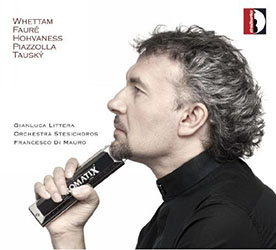
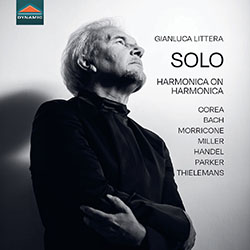
You need not share this written information with anyone else or talk to others about your plan.
Keep your specifics to yourself.
However, you must have a detailed written plan you have created for yourself. A real SMART Plan!
Here is an example of a written plan for a beginner learning how to play a diatonic harmonica.
My
Musical Objectives, Goals, Mission, Background
My Current Musical Objectives, Tasks, Weekly Efforts, Daily Practices
December 2024 - February 2025
Daily Practice with a 10 hole diatonic harmonica in the Key of C Major Low, and C Major.
Use three books on learning how to improvise on a harmonica.
Close my eyes, play the harmonica, listen, enjoy myself, and improvise daily.
Commit to 60 minutes a day of harmonica PRACTICE as defined by David Barrett.
Daily use of
"The Big Harmonica Songbook: 200 Popular and Rare Folk Tunes" by Olaf Bohme. Compiled and presented in standard musical notation, diatonic harmonica tablature, guitar chords, and lyrics. All 200 tunes arranged for
C Major, with useful information on Position playing.
Watch 4 Lessons each week by Lucas Clebsch (Luke) at Harmonica.com.
Learn how to use "Band in a Box" software.
Learning how to play 5 simple Folk/Kids music tunes properly all the way through.
Listen to and evaluate audio recordings of my playing a harmonica.
Working on 3/4 Time compositions: Molly Malone, Streets of Laredo, Sweet Betsy from Pike, etc.
Set up the home audio recording hardware and software in my study.
Playing, Jamming, Learning, Practicing, and Enjoying music on a harmonica.
Keep my notes about learning how to play a harmonica on this webpage and my blog.
Write about what I want to learn, make notes, study my notes, read, review, use triggers.
Explore/Play using diatonic harmonicas in other Major Keys and Low Major Keys.
Focus on 3/4 time musical compositions.
More recording sessions.
Set up my new Windows laptop.
Refer to Musicality, by Christopher Sutton, Chapter 2, "Mindset", Big Picture Vision"
Intermediate Objectives (March - September 2025):
Improve my overall health and heart-lung functioning by proper exercise, diet, rest, and fun.
Find a
good harmonica teacher online or live in Portland, Oregon, or Vancouver, Washington.
Learn how to use the Band in a Box computer software.
Daily use of the Big Harmonica Songbook by Olaf Bohme.
Learn how to properly use my audio recording equipment and software.
Continue to advance my understanding of musical theory, history, styles, and practices.
Daily PRACTICE reading sheet music notation and tablature.
Keep my notes about learning how to play a harmonica on this webpage and my blog.
Enjoy playing diatonic harmonicas in different Keys.
Learn a few more Blues licks and riffs.
Playing, Jamming, Learning, Practicing, and Enjoying music on a harmonica.
Watch harmonica lessons offered online.
Improve my rhythm and timing by using percussion instruments (cajon box, bongos, claves).
My Musical Goals (November 2024 - November 2026)
Enjoying playing a harmonica every day.
Playing tunes by ear, without reading musical notation.
Useing Head, Hands,
Formal PRACTICE
60 minutes per day.
Learning how read and play using standard sheet music.
Learning how to play better chords on the harmonica.
Learning how to play harmonica rhythmic patterns better.
Listening to harmonica music.
Learning some harmonica musical theory each week.
Learning to interpret standard musical score notation for a harmonica.
Learning how to play easy popular tunes on the harmonica.
Learn how to use Band in a Box software.
Learn how to use FL Studio Pro software.
Playing for others, sharing music, playing with others.
Playing percussion instruments.
Refer to Musicality, by Christopher Sutton, Chapter 2, "Mindset", Big Picture Vision"
My Musical Mission
Listening to all kinds of music over a lifetime.
Enjoying the pleasures of music over a lifetime.
Seeking positive, uplifting, spiritual, and mystical experiences via music.
Enjoying playing the harmonica, percussion instruments, or an electronic keyboard.
Sharing good sounds with others.
Encouraging and supporting musicians.
Purchasing music on MP3 or WAV formats.
Enjoying dancing and moving to music.
Listening to music or dance on radio, television, streaming, or DVDs.
Exploring the sounds of nature, humans, musicians.
Playing music as a form of meditation.
Use music for walking, exercise, gardening, outdoor pleasures.
Becoming a musician myself.
Improvising for pleasure and exploration.
Background, Introduction
I have owned various harmonicas since my childhood days.
I have enjoyed playing various harmonicas by myself.
I have used various books, CDs, MP3s, charts, videos, and online learning resources to learn
how to play the harmonica.
I am 78 years of age in 2024. I live in Vancouver, Washington; across the Columbia River from the City of Portland, Oregon. I am retired. My Green Way Research Web Publishing and Cloud Hands Blog are quite extensive.
I now focus for 60 minutes or more each day in learning and PRACTICING with a harmonica.
Purchasing good quality harmonicas in different Keys, books, CDs, MP3s, online resources, online video instruction, e.g., Lucas Clebsch (Luke), and paying for a personal harmonica instructor can be costly for harmonica hobbyists, serious intermediate harmonica students and lifetime enthusiasts.
Good education and ongoing learning are essential for steady improvement and more fun.
From January to May 2024, I used a Hohner Crossover Marine Band in the Key of C and a Seydel Sohne 1847 Bold Body Low Tone Key of Low C for daily practice. I was learning the chords on the C Key harmonica, learning the hole notes and playing single notes more clearly. Most basic instruction books for the harmonic focus on using a diatonic harmonic in the Key of C. I have gained some fluency in properly playing single notes and chords, in blowing techniques, and I can entertain myself with some improvising.
Harmonica Studies by Michael Garofalo
Return to the Top Index of This Webpage


My Progress Reports
Diatonic Harmonica Playing, Practice and Learning
How Well Did I Do, What Objective Did I Accomplish
How are my studies going?
Periodically evaluate my specific progress on my specific two month objectives. Report on my progress. And, be honest with myself.
Be SMART with defining and setting my two month Objectives. Are my objectives: Specific, Measurable, Achievable, Relevant and Time-bound.
Goals and Mission are longer range plans and aims.
July - August 2024
Daily Practice with a diatonic harmonica in the Key of C Major and Low C Major. Yes!
Use Hohner Crossover Marine Band and Thunderbird harmonicas for practice. Yes!
Commit to 60 minutes a day of harmonica PRACTICE as defined by David Barrett.
About 30 minutes each day. 1.5- 2.0 hours of free play, improvising, reviewing, replaying.
Use the book "Easy Piano Sheet Music for Kids" for PRACTICE lessons. Yes!
I am learning to play by reading some sheet music that does NOT have harmonica tablature. Yes!
Watch 2 Lessons each week by Lucas Clebsch (Luke) at Harmonica.com. About 70% of time.
Learn how to use "Band in a Box" software. Installed and now learning.
Learning how to play 10 simple Folk/Kids music tunes properly all the way through. Learned 8!
Recording 21, June 29, 2024, C Major Low Diatonic Harmonica, by Michael P. Garofalo
Listen to and evaluate audio recordings of my playing a harmonica.
No! Could not get mics and electronic equipment to work properly. Reset!
Set up the home audio recording hardware and software in my study.
Purchased electronic hardware and software.
Tried, but failed to reach objectives. Reset!
Playing, Jamming, Learning, Practicing, and Enjoying music on a harmonica. Yes! Yes! Yes!
Return to the Top Index of This Webpage

Harmonica Studies by Michael Garofalo
Return to the Top Index of This Webpage